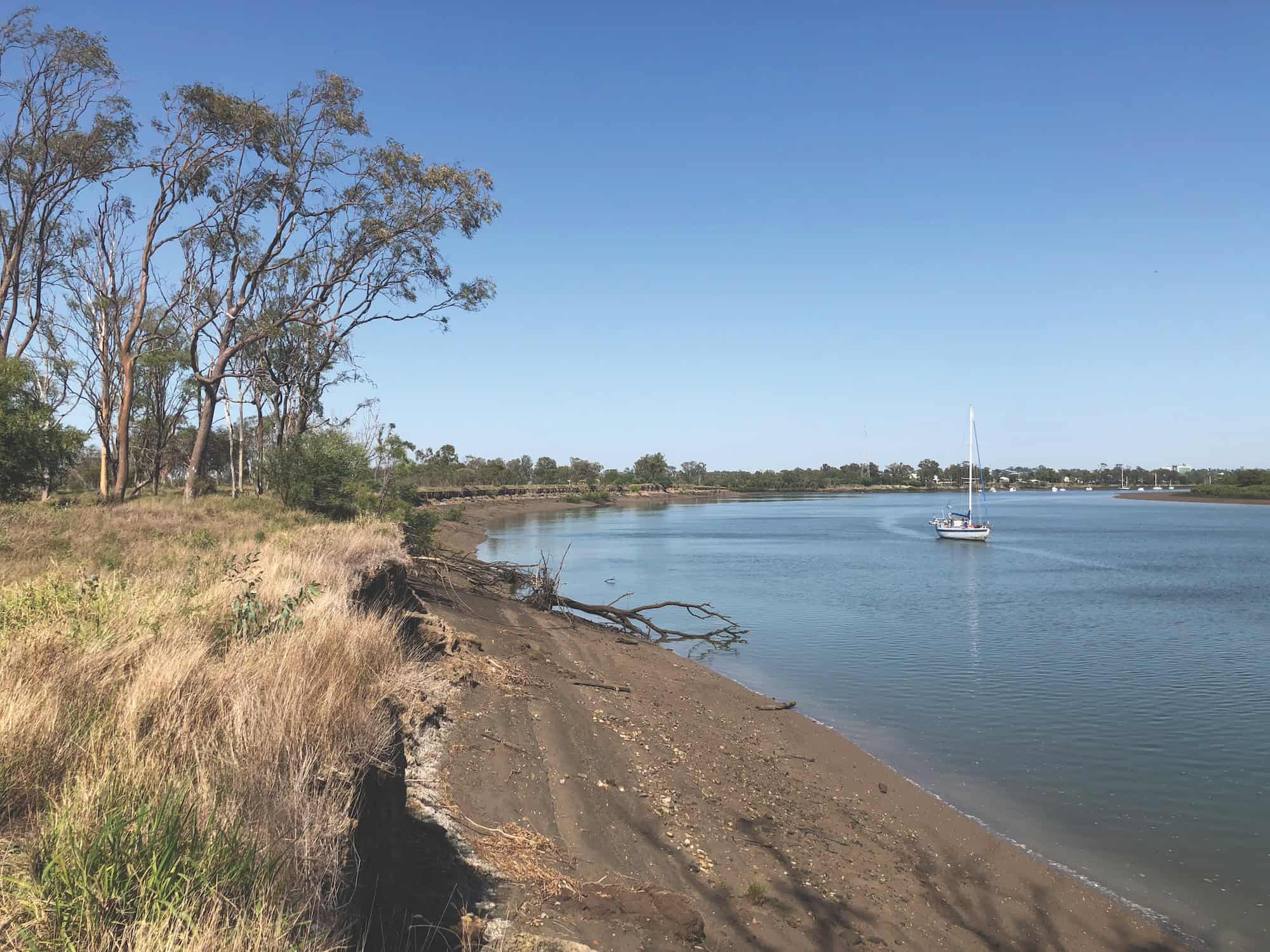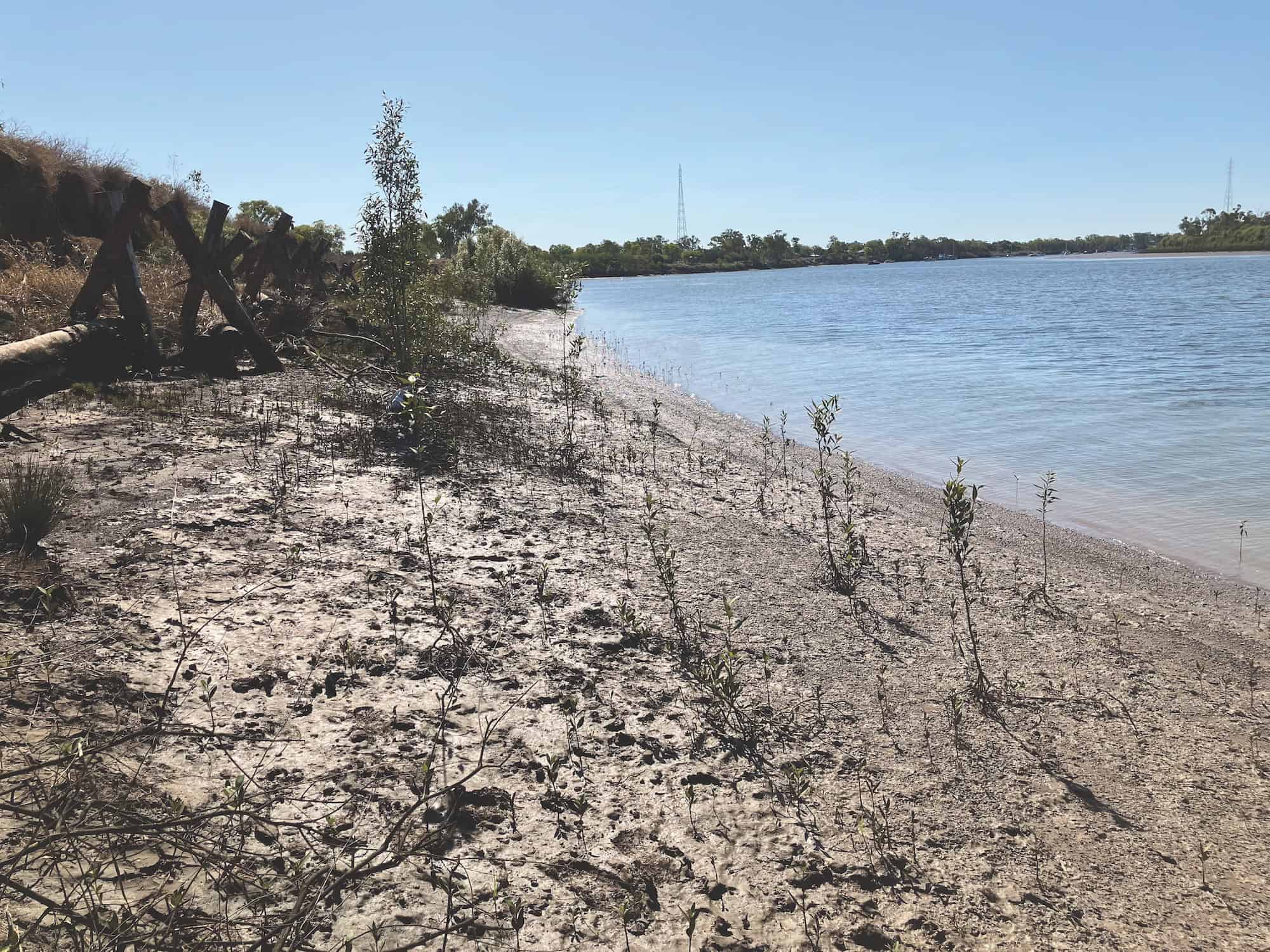Completed in June, 2024 with nearly $20 million invested through the Reef Trust Partnership, the Fitzroy Water Quality Program had an ambitious goal: to prevent 50,000 tonnes of fine sediment from the Fitzroy River Basin entering the Reef’s waters every year.
A series of projects improved landscape function, remediated degraded land, including gullies and streambanks, and improved land management – particularly of grazing and cropping lands.
Lower Fitzroy Streambank Stabilisation Project
This project resulted in the stabilisation of 900m of the Fitzroy River, along a bank that has retreated 180m since 1952. Prior to stabilisation works, it is estimated that 515,000 tonnes of sediment were lost between 2008 and 2020.
As well as civil works which saw 1,352 log piles installed along with 3800 tonnes of rocks for chutes and rock breaching, the project also established 10,000 native plants including sedges, grasses, rushes and trees and installed 1.3km of fencing to exclude livestock from sensitive riparian zones.
In total, more than $4 million was invested resulting in a sediment saving of 43,000 tonnes annually!
Everyone has a role to play in protecting the Reef. Land managers who reduce sediment run-off to improve waterway and reef health are helping to create long term benefits for everyone in the Fitzroy region – Daniel Boshoff, Fitzroy Basin Association
Grazing Practices Create Positive Change
By engaging five graziers on properties bordering the Fitzroy River, this project was able to improve riparian zones, control erosion and allow ground cover to regenerate.
A total of 5.4km of fencing was installed to protect riparian zones and Land Management Plans were put in place across all sites to reduce grazing pressure and encourage ground cover.
These activities resulted in a sediment saving of 8,372 tonnes per year.
Grazing Land Management Project
19,610 tonnes of fine sediment were prevented from entering Great Barrier Reef waters thanks to a combination of grazing land management improvement and gully rehabilitation.
This outcome was achieved by engaging four landholders who worked on practice change and one landholder who rehabilitated two gullies flowing directly into the Fitzroy River. As a result of their commitment and project funding, 956ha of pastures were improved and 5 gully rock chutes were installed.
In addition, 204km of fencing was installed, along with 74 gates, 50 water tanks, 134 water troughs, 109km of underground pipe and 18 solar pumps.
Streambank and Gully Erosion Solutions for the Fitzroy Catchment
Prior to this project, the site was experiencing a total erosion rate of more than 12,000 tonnes per year – largely due to the streambank eroding (at a rate of 2 metres per year), tidal scour, boat wash and flood events.
The approach to restoration involved reprofiling the streambank and installing 53 log fillet erosion control structures, rock breaching and revegetation. As well as installing 668m of fencing to exclude livestock from riparian zones, 480 mangrove plants were established alongside 2,872 riparian plants.
The project resulted in 680m of streambank being restored as well as the natural recruitment of mangroves in very high numbers, contributing to the long term stability of the bank.

BEFORE: Streambank prior to restoration in 2021. Note the absence of mangroves and riparian vegetation.

AFTER: Natural mangrove recruitment following installation of log fillet structures.
Download the full project report here.
